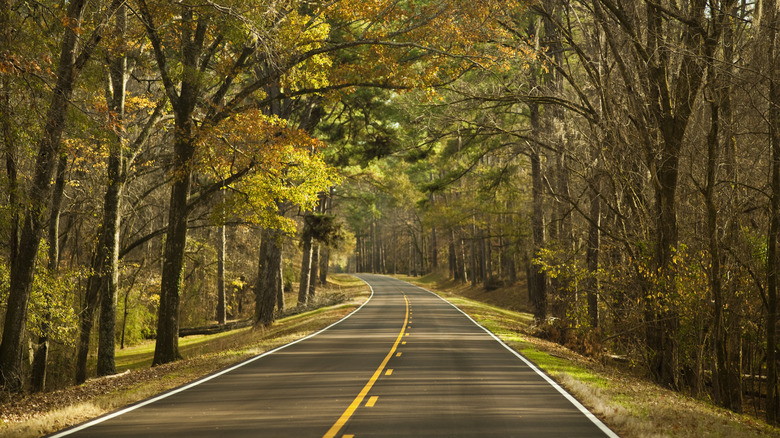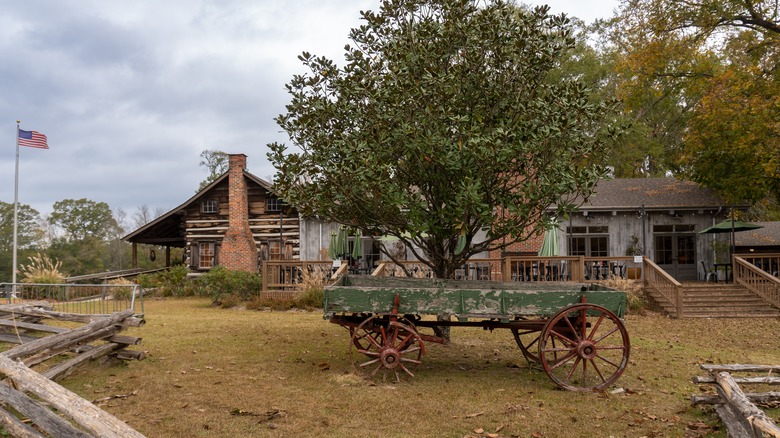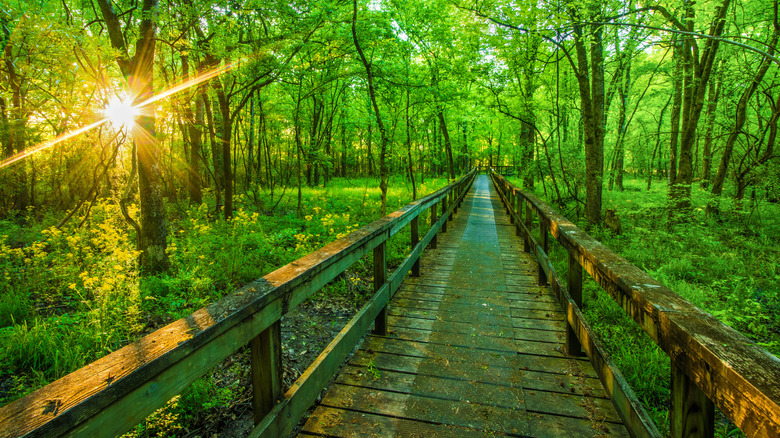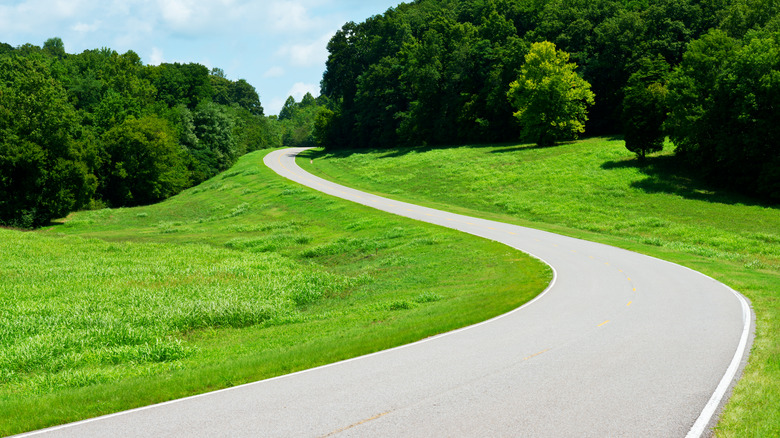This Gorgeous US Road Trip Route Is Considered One Of The Most Storied Roads In The Country
Take a journey through time on a road trip that combines natural splendor with a ton of history in the Deep South. Follow in the hoof prints of bison as well as the footsteps of Native Americans, intrepid explorers, and restless pioneers. The route is 444 miles, traveling between Natchez, Mississippi, and Pasquo, Tennessee, with winding sections through Alabama. We're talking, of course, about the storied Natchez Trace Parkway.
Centuries before automobiles graced its pavement, the Natchez Trace was traveled by Native Americans and European settlers. But even before that, the Trace was a migratory route for bison from the salt licks near Nashville to the lush land around the Mississippi River. By the early 19th century, it had become the most important highway in the Old Southwest, and inns and trading posts were established along the route.
At that time, the Trace was a vibrant, sometimes dangerous, and mysterious place. Explorer Meriwether Lewis (of the Lewis and Clark Expedition) was found dead at an inn along the way, and highwaymen and groups of bandits plagued the route. You can discover much of this history as you travel along the Natchez Trace Parkway. However, the dangers to travelers are now usually confined to running out of gas.
Historical sites on the Natchez Trace Parkway
A drive along the Natchez Trace Parkway is a must-do for history buffs. There are several sites along the Trace that are sacred to Native Americans in the area, including six mounds that are spread along the road from Emerald Mound at milepost 10.3 to Bear Creek Mound at milepost 308.8. (The mileposts start at 0 in Natchez.) These mounds were regarded by those who built them as symbols of Mother Earth.
More recent history can be found in the remains of the inns and houses that lined the Trace. Though many are now marked only by a signboard, several structures remain standing. One of the oldest is the Mount Locust Historic House at milepost 15.5, which dates back to the 1780s, and another is French Camp at milepost 180.7, which trader Louis LeFleur built sometime around 1812.
Other highlights for history lovers include the Old Trace and Confederate Gravesites at milepost 269.4, where the graves of 13 unknown soldiers lie; the Meriwether Lewis Burial Monument at milepost 385.9; and the Gordon House Historic Site at milepost 407.7. Captain John Gordon's house was one of the most impressive in the area when it was built in 1818.
The great outdoors
As you travel along the Natchez Trace, you'll have the chance to experience the changing landscapes of Mississippi, Alabama, and Tennessee. If you want to explore on your own two feet, hike a section or all of the Natchez Trace Scenic Trail. The trail runs in sections, generally following the roadway, and horseback riding is also permitted. There are over 60 miles of foot trails to explore.
In the south, you can hike the three-mile Potkopinu Section, the longest section of the old "sunken" historic Trace. Near Port Gibson, Mississippi, you'll find the Rocky Springs Section, which runs six miles through forested land; you can take a short detour to the remains of the old Rocky Springs Town Site. Hike the Blackland Prairie Section near Tupelo, Mississippi for a different landscape altogether.
There are many scenic overlooks along the route to enjoy the picturesque sights from the car. Driving the Parkway can be particularly spectacular in the fall as the leaves burst into color. Overlooks like Little Mountain in the Jeff Busby Campground at milepost 193.1; Freedom Hills Overlook at milepost 317; and Metal Ford at milepost 382 all offer glorious views.
How to plan a road trip
Traveling the entire Natchez Trace Parkway by car takes an average of 10.5 hours if you do it all in one go. But why would you do that when there's so much to see? We recommend taking at least a couple of days, if not longer, to enjoy the sights along the Parkway. There are three first-come-first-served campgrounds along the route, all free to stay at, making them a perfect place to break your journey. If camping isn't for you, consider staying in Jackson and visiting the museums there or Tupelo to see the birthplace of Elvis Presley.
There are plenty of small towns and larger cities along the road, so you can pull off to buy gas and take a break whenever you need to. Be aware that there are no services directly on the Parkway, so don't keep rolling along thinking a gas station will magically appear. In terms of season, the Parkway tends to be open year-round, though the weather can get very steamy during the summer, and roads can be icy in the winter.
Finally, perhaps you don't want to plan a road trip at all. Plan a bike trip instead. The route is open to cyclists, though it's recommended only for those with experience because of the sometimes heavy traffic. The National Park Service has tips for cyclists to keep themselves safe on the Parkway so they can enjoy the ride to the full.



